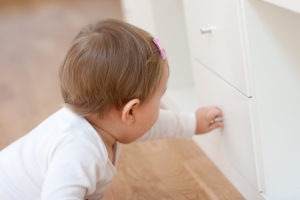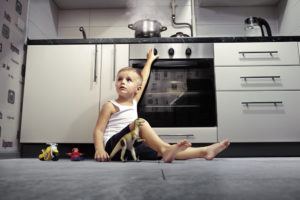10 Tips for Babyproofing Your House and Getting Ready for Baby
Whether your due date is right around the corner or your baby has just been born, you’re likely thinking about how to babyproof your home. From the moment a little one enters your house and becomes part of the family, safety is a concern.
We’ve put together some tips that new parents can take to make their home a place where infants can safely thrive.
Here are 10 ways to babyproof your home and prepare for baby.
 1. Give your house the safety test
1. Give your house the safety test
Babies who simply lie around in bassinets quickly turn into toddlers crawling all over the place. In the kitchen and living room, as well as the bathrooms and bedrooms, there are many things that little ones shouldn’t get into at all.
Parents might not think that a baby can open a cabinet or drawer. Kids surprise adults all the time. You never know when the little one will start crawling. Well, before your baby is mobile (which ideally means before birth or during those first few days at home), give your house a safety check.
According to The American Academy of Pediatrics, cleaning products and medication should be out of sight and locked away. Magnetic locks are popular and easy to install, without pinching fingers as other locks do.
Lock firearms ammunition separately from guns. Check smoke detectors and install carbon monoxide detectors.
 2. Target high-germ zones
2. Target high-germ zones
Even though the baby won’t be able to crawl or walk for a while, you’ll be moving about your house and don’t want to transfer germs to your little one. You might think that doorknobs and light switches are the germiest places that need to be cleaned. However, the real target zones are dish rags, stove knobs, countertops and refrigerator handles.
The National Sanitation Foundation International notes that these places, along with the kitchen sink, cutting boards and toothbrush holders, are the most germ-infested spaces in a home. This is likely because they’re high-use areas that we don’t think to clean as much.


